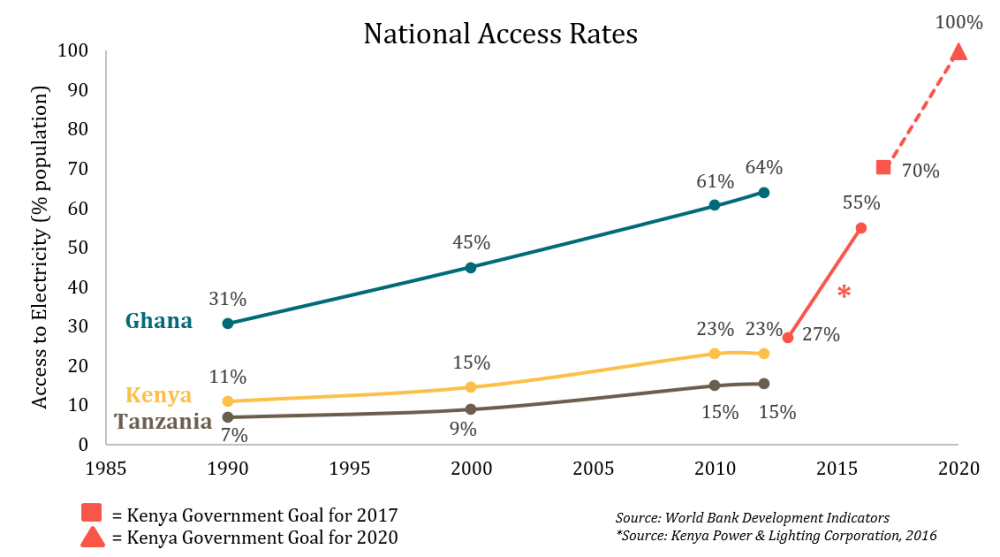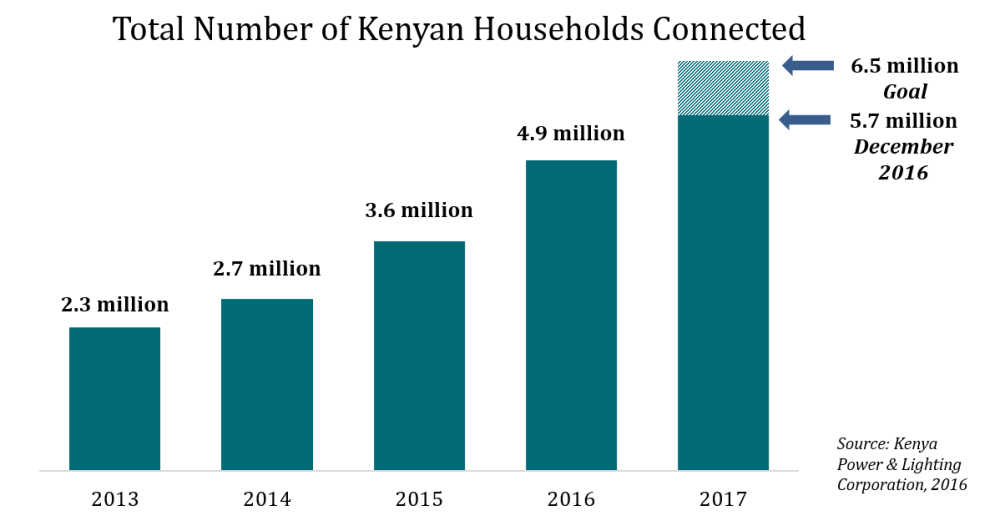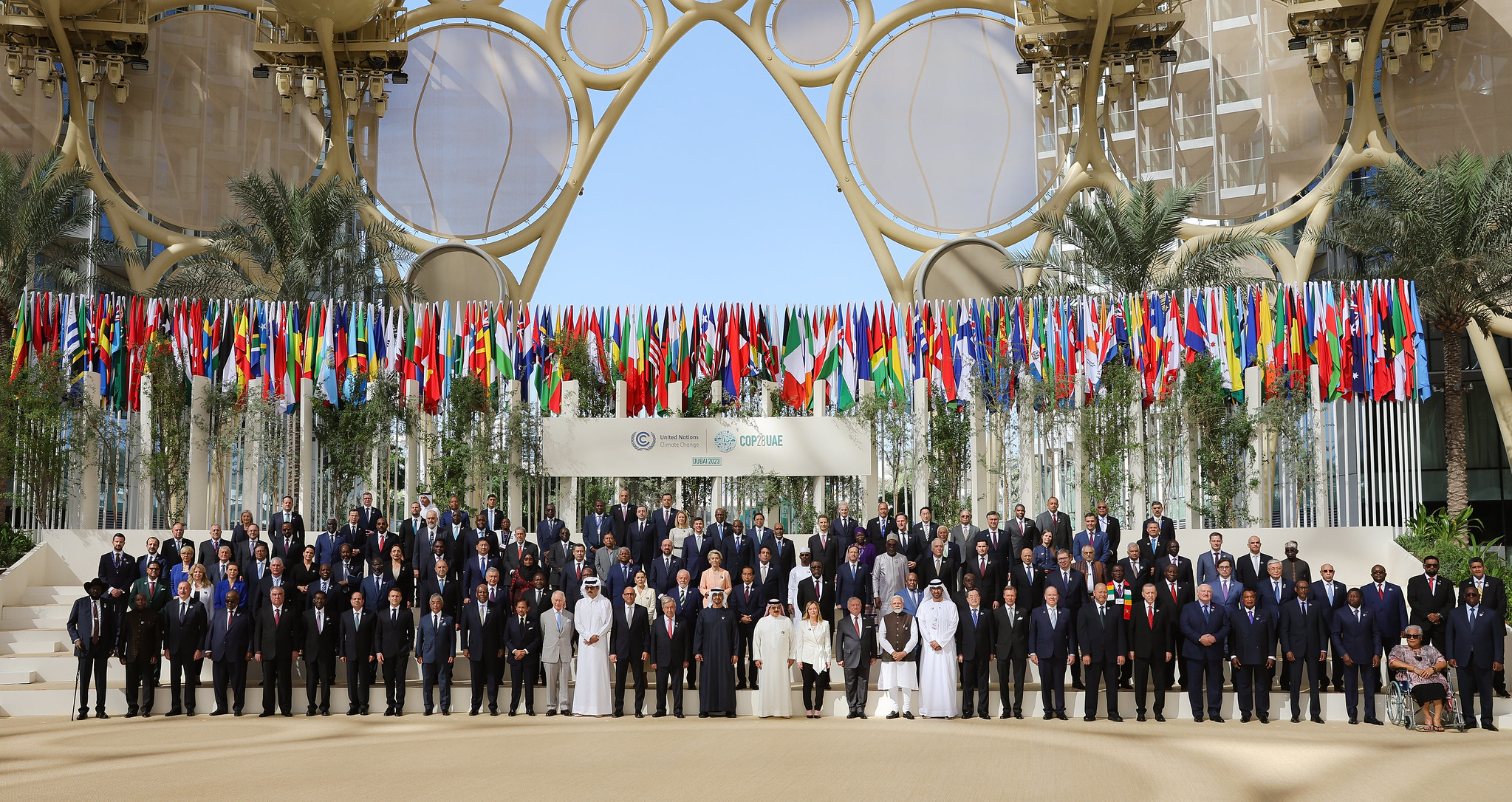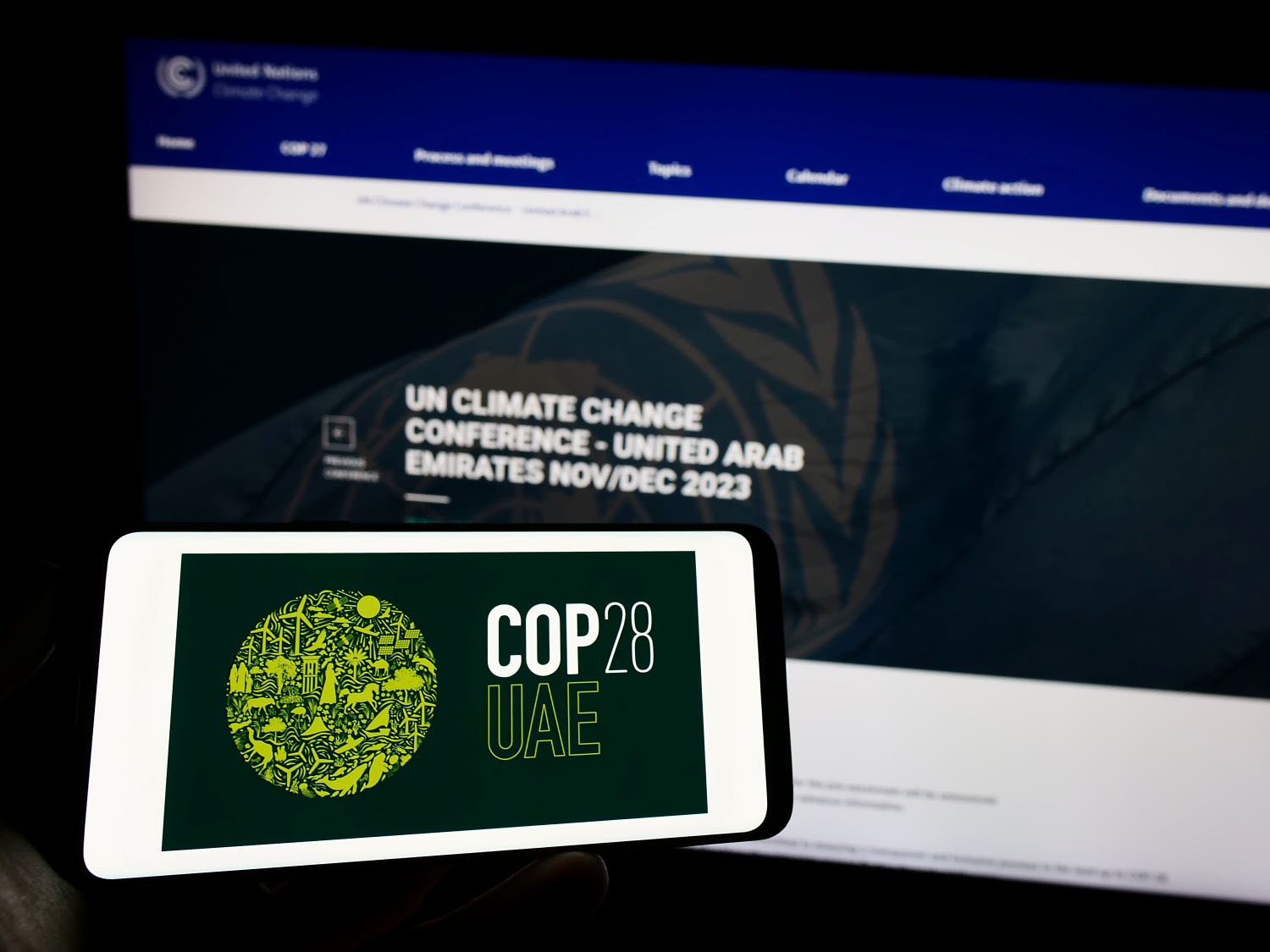In the twelve months to June 2016, nearly 1.3 million Kenyan households were connected to the grid for the first time. This impressive feat pushed Kenya’s national electricity connectivity rate to 55 percent from just 27 percent in 2013, one of the fastest connection increases recorded in the region. These latest connections illustrate the Kenyan government’s commitment to a goal of achieving universal energy access by 2020 (at least as measured by number of connections by Kenya Power and Lighting Corporation (KPLC), the national utility that owns and operates most of the electricity transmission and distribution system).
This is impressive. The jump from 27 percent to 55 percent took Kenya a little over three years. That same achievement took the United States about eight years during the height of the push to expand household electrification.[1]
Now, Kenya aims to move from 55 percent to a ‘near universal’ access rate of 95 percent in just four more years—a leap that took the United States nearly twenty-six years. Yes, the U.S. is larger in size and population, but Kenya’s ambitions are still tremendous. In order to reach its goal, Kenya aims to hit 6.5 million connected households by July 2017, their most ambitious annual connections target yet. As of the end of last month, they are just about halfway there and roughly on track.
All this highlights Kenya as an example of extremely fast progress in electrification. So, what is Kenya’s strategy?
-
Invest heavily: In 2015, the Kenyan government and KPLC announced the Last Mile Connectivity Project, an initiative to connect one million customers per year. The government has already secured over $600 million from various international donors, and aims to connect over 814,000 households, measured as four million Kenyans, over the next four years.
-
Promote ‘under grid’ connections: Many Kenyans continue to live ‘under the grid,’ meaning the grid infrastructure is near where they live, but they are not connected. In response, many of Kenya’s connectivity programs, including the Last Mile project, have made an effort to leverage existing infrastructure in order to connect nearby populations as quickly as possible. For example, Phase I of the Last Mile project is focused on connecting under grid households within 600 meters of existing KPLC transformers.
-
Address demand side constraints: Two major policy adjustments in the last year reflect the government’s awareness of demand-side barriers to access. The government reduced the connection charge by over 50 percent and offered customers the option to pay the charge in installments. KPLC also scrapped a cumbersome application process, which was evidently skewed in favor of literate and wealthier households.
Will Kenya reach 95 percent by 2020? Due to KPLC’s remarkable transparency on progress on household connections, we can follow along in nearly real-time. Check it out, here.
[1] Household level data from Historical Statistics of the United States, Colonial Times to 1970, pg. 827 [Series S109].
CGD blog posts reflect the views of the authors, drawing on prior research and experience in their areas of expertise.
CGD is a nonpartisan, independent organization and does not take institutional positions.







